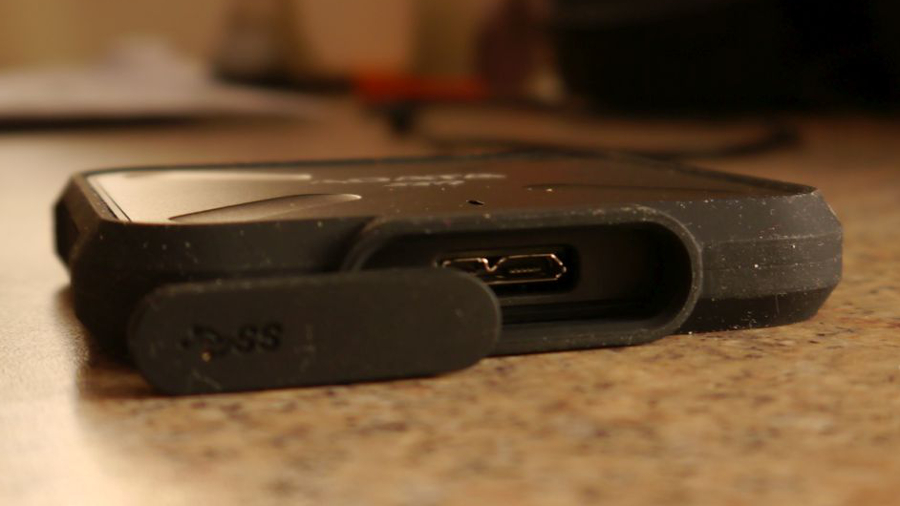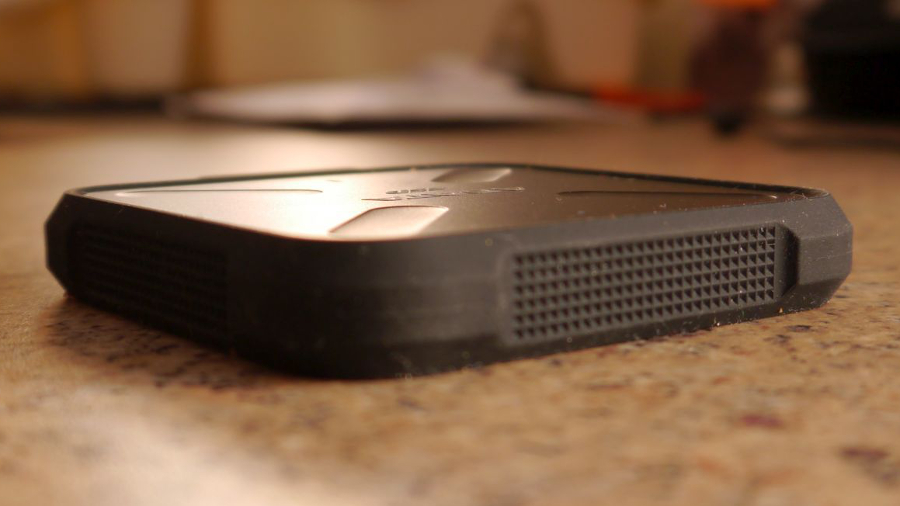Early Verdict
The SD700 will suit those looking for a rugged storage device that can provide ample capacity without costing too much. It performs superbly well and remains the only SSD we’ve seen that is IP68 rated.
Pros
- +
Great performance
- +
IP68 rating
- +
Decent price/capacity ratio
Cons
- -
No USB Type-C
Why you can trust TechRadar
Hard disk drives used to dominate the world of external storage, but the arrival of silicon-based technology has changed the norm and gobbled away their market share within a few years.
While the first flash USB drives lacked the capacity and the speed to match external HDDs, more recent models have managed to surpass them except when it comes to price per unit of storage.
For a growing minority though, adopting silicon-based storage will have proved to be life-changing, especially if they opted for mid-sized SSDs.
With barely any external hard drives available with a capacity lower than 1TB, solid-state drive vendors have had a field day, multiplying the number of SKUs between 64GB (the most popular USB drive capacity) and 1TB (which is where most external HDDs start, as mentioned).

Available in 256GB, 512GB and 1TB versions – in black or bright yellow colour schemes – the Adata SD700 is one of several external SSDs that aspire to compete with hard disk drives while offering many appealing features.
The most obvious one is that it is significantly smaller and lighter than your average portable hard drive – the latter usually sport a 2.5-inch hard disk and weigh more than 200g.
In contrast, the SD700 weighs a mere 74g (the iPhone 5C is 132g in comparison) and is a compact 85 x 85 x 14mm in size, making it a lot more pocket-friendly than even the smallest platter-based HDD.
Sign up to the TechRadar Pro newsletter to get all the top news, opinion, features and guidance your business needs to succeed!
Then there’s the fact that it’s IP68 rated which means that it should be protected against water ingress to a maximum depth of 1.5 metres for up to 30 minutes, as well as being protected against the ravages of dust.

It’s also tested to military grades (MIL-STD-810G 516.6) to withstand shock even when in use (although the cable might become loose or the connector might break).
In other words, assuming that the USB port cover is firmly closed and secured in place, this is one of the most solid high capacity devices you can buy. A proper ruggedized storage drive if you’re looking for one.
The drive is protected by a non-removable rubber ring and the electronics are enclosed by an aluminium chassis, with the ADATA logo and the word SSD displayed prominently on top, and a blue status light just below.
CrystalDiskInfo recognised the drive as being the SU800 which we reviewed last year. It makes sense for Adata to use the same components to make the most of economies of scale.
That meant teaming the Silicon Motion SMI SM2258 controller with IMFT’s 384Gbit TLC 3D NAND flash modules and what Adata describes as a DRAM cache.
Switching to 3D NAND ensures that the drive consumes even less power per unit storage, packs more bits per unit volume and heats up less (it was barely warm during our tests).

It connects to any host computers using a USB Type-A connector (v3.1 gen 1) meaning that the maximum theoretical transfer limit is 5Gbps, the same as that of v3.0. A Type-C connector might have been preferable since most new high-end laptops come with these.
Adata throws in a three-year warranty, a rather thick but short cable, as well as a few software goodies including Macrium Reflect backup suite, an SSD toolbox, Acronis True Image HD and OS to Go. The SD700 supports AES 256 Encryption and users can use this function through ADATA's “HDDtoGO” which can be downloaded from the website.
In our benchmarks using CrystalDiskMark, the SD700 hit 433MBps and 427MBps in read and write speeds respectively, which is about an order of magnitude faster than magnetic hard disk drives.
Compared to the SU800 though, which reached 563/508MBps in the same benchmark, it is a bit of a disappointment – although an expected one because of the limitations of USB and the overhead associated with having a USB-to-SATA bridge.
Should you want to open the drive, the two parts of the shell come off using a flat screwdriver. Other than the NAND chips, there’s also a single Nanya NT5CC256W DRAM chip, which could either be a 256MB or a 512MB DDR3 buffer.
Early verdict
At just under £153 (around $190, AU$250) at the time of writing, this portable drive is slightly less expensive than the likes of the Samsung T3 or the SanDisk Extreme 500 while offering an extra 12GB and 32GB respectively. The margin is even wider when compared to LaCie’s rugged SSD range.
You still pay a premium compared to the SU800 (about 17%), which is essentially the same drive, and that’s slightly annoying but then the SD700 targets a niche.
Moving forward, Toshiba/Western Digital now have 512GB 64-layer 3D NAND chips in their portfolios with IMFT and Samsung likely to follow suit within a few months.
They represent a 50% improvement on the chip used in the SD700 which means that a 2TB model is likely to appear later this year.
We would love to see a smaller version of the drive – a physically smaller model that is – something that should be possible if the next iteration adopts a USB Type-C connector. The current one is notoriously fragile and far too chunky for a thinner, nimbler drive.

Désiré has been musing and writing about technology during a career spanning four decades. He dabbled in website builders and web hosting when DHTML and frames were in vogue and started narrating about the impact of technology on society just before the start of the Y2K hysteria at the turn of the last millennium.
What is a hands on review?
Hands on reviews' are a journalist's first impressions of a piece of kit based on spending some time with it. It may be just a few moments, or a few hours. The important thing is we have been able to play with it ourselves and can give you some sense of what it's like to use, even if it's only an embryonic view. For more information, see TechRadar's Reviews Guarantee.
